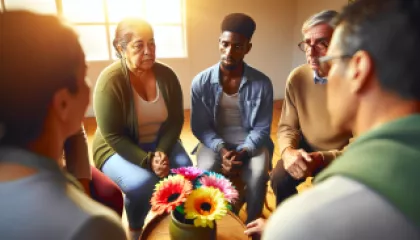Understanding Recovery: A Review of Emotional Abuse Healing Research
vor 1 Jahr
Heilung von emotionalem Missbrauch
Emotional abuse, a form of violence that is often overlooked due to its invisible nature, has substantial and enduring impacts on individuals' mental, physical, and emotional well-being. Despite the pervasiveness of this issue, it remains under-researched, particularly in terms of healing and recovery processes. This article aims to provide a comprehensive review and synthesis of existing scholarly research on emotional abuse healing, highlighting key findings and identifying gaps in the current knowledge base.
Top 10 Diverse Relationship Types Redefining Love
vor 1 Jahr
Beziehungsdiversität
In this modern age, our understanding of relationships has significantly evolved. No longer are we confined to the traditional relationship model. Instead, we're embracing a variety of relationship types that redefine our understanding of love and connection. Here, we explore ten diverse relationship types that are challenging the norms and redefining love in the 21st century.


